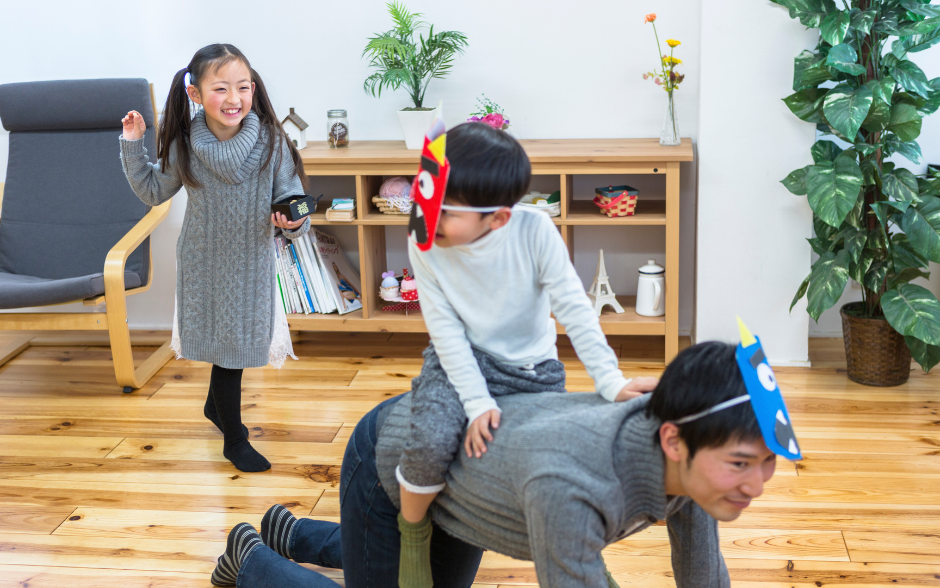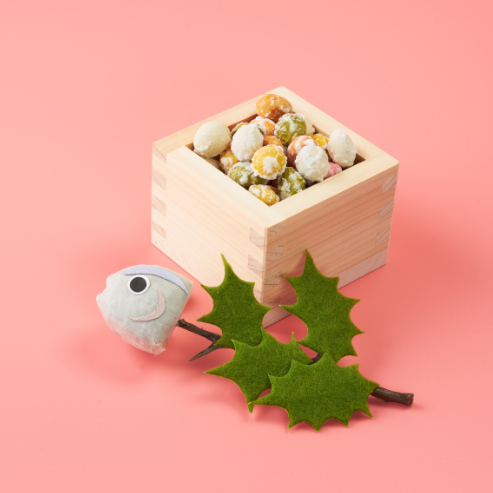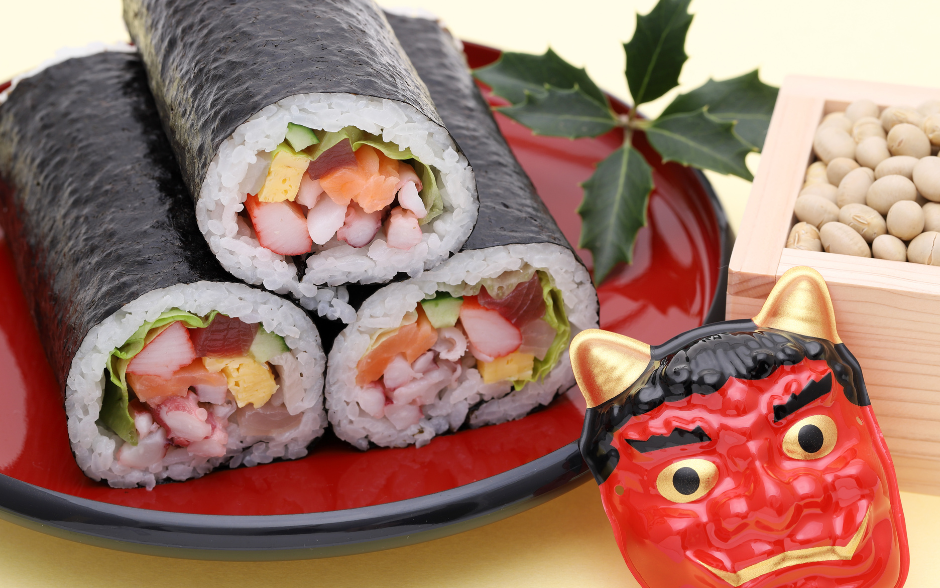What do beans, sardines, Japanese ogres, and giant sushi rolls have in common?
The fascinating Japanese holiday known as Setsubun (seh-tsu-BOON), of course!
Setsubun (節分) is a traditional festival in Japan that marks the day before the beginning of Spring according to the old Japanese lunar calendar. This year, Setsubun falls on Saturday, February 3rd. There are many fun rituals associated with the holiday, many of which are focused on chasing out all the bad luck that lurks at the turning of the seasons.
Mamemaki

One of the most common rituals is mamemaki (豆撒き), or “bean scattering.” This involves throwing roasted soybeans out the doors and windows of the homes, schools and temples to ward off bad luck A popular variation of this tradition, especially among children, is to throw beans at a family member wearing an oni mask. Oni (鬼), or Japanese ogres, symbolize illness and misfortune, so throwing beans at them is thought to help purify the home. Children typically chase oni out of the house with beans before slamming the door in their faces for good measure.

As beans are thrown about, it is important to shout:
鬼は外! 福は内!
Oni wa soto! Fuku wa uchi!
Bad luck out! Fortune in!
After scattering the beans, everyone must then eat as many beans as their age and then one extra for good health.
Hiiragi Iwashi

Once all the bad luck has been chased out, it’s a good idea to prevent it from coming back in. To ward off misfortune, families in some parts of Japan hang hiiragi iwashi outside their doors. Hiiragi Iwashi (柊鰯), which literally translates to “holly sardine,” is a decoration that consists of a grilled sardine head attached to sprigs of holly. The thought is that the fishy smell of the sardines coupled with the prickly holly will create an effective barrier against oni entering the home.
Ehoumaki (Lucky Direction Rolls)

Eating ehoumaki on the evening of Setsubun is another popular tradition originating from the Kansai region of Japan. Ehoumaki is a thick type of sushi roll typically made with 7 different fillings, representing good health, luck and prosperity. The type of ingredient does not matter as much as the number, so many varieties exist. In recent years, even modern interpretations like dessert ehoumaki made out of rolled sponge cake, whipped cream and fruit have gained in popularity.
It is believed that if you can eat the whole uncut roll in complete silence whilst facing the lucky direction of the year, your wish will come true!
This year’s lucky direction is East-Northeast!
Interested in learning more about Japanese culture?
Join us at the library for the following programs:
- Setsubun special event for children aged 5+ today at 4PM
- Teen Anime Club on Tuesdays at 5PM
- Basic Japanese for teens and adults on Mondays at 6:30PM
With your library card, you can also learn Japanese for free at your own pace with Mango Languages.


Recent Comments